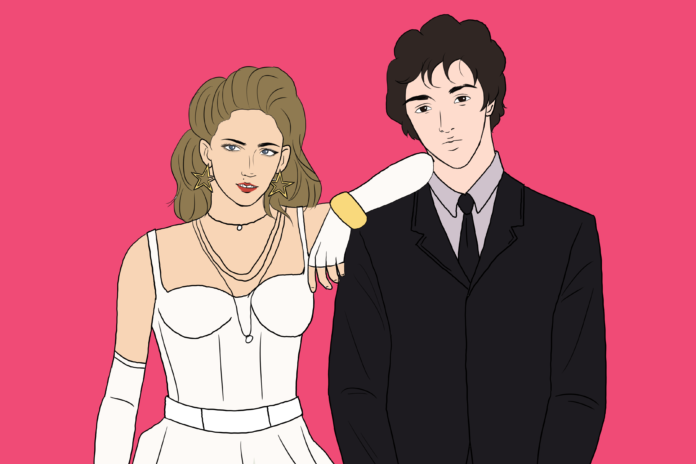Creative liberties should persist outside of age, gender
I used to roll my eyes as a kid when my parents sat me down in front of their desktops to listen to a musician from their generation. As children, we can find it difficult to understand the magnitude of these artists’ influence in the world. Our society loves to ravenously consume the next, flashiest thing that flitters into our vision. What happens when yesterday’s stars aren’t ready to be cast aside?
It would be wrong to speak about the artists of today without recognizing the influence of past performers. Lady Gaga’s 2009 VMAs performance “Paparazzi” can be likened to Madonna’s controversial “Vogue” performance at the same awards show. The One Direction craze that defined my middle school career is still overshadowed by the infamous Beatlemania of the 1960s.
I’m inspired by these people: yesterday’s performers who still produce music today. Artists like Paul McCartney, Bruce Springsteen and Madonna are still cranking out albums and cashing checks. This is all pretty impressive considering that they’ve been at this process for as long as they have. Creatively, I can see myself burning out in the next three to five business days. That’s what makes these people superstars as opposed to just momentary bodies in the orbit of fame.
Yet a lot of the noise surrounding these particular artists revolves around their artistic vision in relation to their age. The ways that artists present themselves in their music is crucial to both the success of their records and the satisfaction of the artists themselves.
Bruce Springsteen’s most recent release, “Western Stars,” is an album about horses. The only personal vendetta I have against this record is that I am terrified of horses. But nevertheless, I wasn’t a huge fan of the album, and I can attribute that to my own personal taste.
Madonna’s most recent record, “Madame X,” is an ode to the eponymous character who is Madonna’s secret agent alter ego. In a teaser video, Madonna reveals that Madame X is not only a secret agent, but someone who inhabits many different personas, such as a head of state or a student.
These two albums by Madonna and Springsteen are more similar than they seem. They were actually released on the same date: June 14, 2019. They are also very similar conceptually. Both Springsteen and Madonna aim to reclaim a nostalgia for past lives and experiences — the American west and globe-trotting, respectively. And they were both released by aging music idols.
Both albums, however, diverge in their critical reception.
“Madame X” aimed to highlight the many different personas that Madame X — and thereby Madonna — can manifest. Springsteen is doing the same thing, changing himself for nuanced art, but in a different way. Both Madonna and Bruce Springsteen seem to strive for the same artistic trope, similar to Beyonce’s Sasha Fierce or Nicki Minaj’s Roman.
Despite these clear artistic similarities, critics ripped into Madonna’s album much more than Springsteen’s album.
“Western Stars” reviews were largely positive. Critics praised the cinematic aspects of the album and Springsteen’s ability to metamorphose into a cowboy for the sake of his art. Pitchfork’s review only alluded to Springsteen’s age once and finished off the piece by touting Springsteen’s continued heroism in his old age.
On the other hand, Critics claimed that Madonna’s direction was worrisome. But they should be reviewing an album, not an artist’s mental state. Many of the reviews were riddled with sly allusions to Madonna’s age. Pitchfork references “falling asleep at the wheel” and asks readers if we’re all “getting too old for this.” I’m all for a holistic review, but there’s a line between a review and a personal attack.
You don’t “worry” about artists. You worry about your grandparents. You worry for the people who you feel aren’t capable enough to hold their own in the world. You definitely don’t need to worry about Madonna. Multimillionaire status doesn’t come without the ability to put in work.
Many people frame this issue as one of ageism, but it would be unwise to ignore the sexist tropes that are hidden beneath uppity music terminology and review jargon.
With these two aspects at play, the cards are stacked against artists like Madonna. We’ve watched it happen all over pop culture. The film industry struggles with the same dynamics, as it has for years.
All artists should be able to explore whatever identities or perspectives they see fit. To assess the quality of art through the lens of an artist’s age or gender identity is to do a great disservice to the power and value of art itself.
Written by: Isabella Chuecos – ifchuecos@ucdavis.edu
Disclaimer: The views and opinions expressed by individual columnists belong to the columnists alone and do not necessarily indicate the views and opinions held by The California Aggie





“To assess the quality of art through the lens of an artist’s age or gender identity is to do a great disservice to the power and value of art itself.”
How about race? If one assess the quality of art through a “colorblind” lens, then one is likely to be accused of being “not woke” or even straight-up racist. These people are crazed ideologues, sure, but it does raise the question of when and how to separate art from artist.